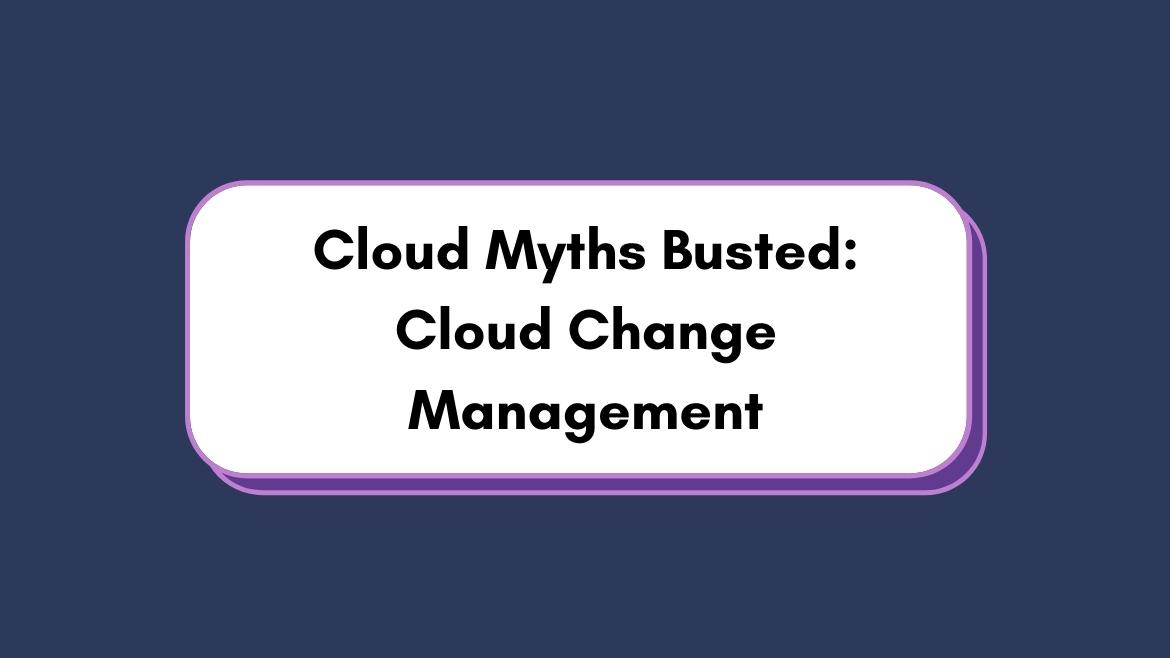Busting myths around cloud change management

One of the common hesitations we experience about companies considering cloud is change management.
Will we be able to control our changes, manage our risk, and keep our data safe? Does cloud pose a risk to our change management goals or our end users?
These are important questions to ask, but the good news is that clunky, traditional change management is not safer or better for your team than the more agile practices that come with cloud.
What do we mean? Here are the three myths about change management.
MYTH - Control improves performance.
Traditionally, companies have tried to reach their change management goals by controlling all changes with change advisory boards (CABs) and lengthy approval processes. The logic seems sound: more approvals mean safer releases, even if they slow things down. Fortunately for us in a world where speed matters, this logic doesn’t hold up to scrutiny. In fact, teams with slower, more traditional change management processes are actually 260% more likely to be low performing than their agile counterparts, according to the State of DevOps Report 2019. This means high performers are more likely to be agile—good news for those who choose a more agile model.
MYTH - SaaS companies release too many new features without notice.
It’s true that Atlassian is constantly improving, testing, and releasing new features, security updates, and patches. But in a world where business needs, security best practices, and user expectations are constantly changing, that’s the only way to keep up.
There are costs to a slow release schedule. The most obvious is that if security falls behind, a disaster could be in your business future. In the first half of 2019 alone, data breaches exposed 4.1 billion records. And if a hack takes your business offline? Experts estimate downtime costs companies an average of $5,600 to $9,000 per minute.
Another obvious cost is compliance. If your systems aren’t compliant with the legal requirements of your location or industry, you’re in for a world of hurt, which means compliance updates need to happen just as fast as their security counterparts.
Also obvious is the cost of being behind the innovation curve. Slow release schedules make it easy for competitors to outpace your teams in a world where speed can make or break profits.
A less obvious (though no less important) cost is team time. Small, frequent updates are easy to get used to and won’t slow teams down, while yearly or bi-yearly updates require your teams to face a sometimes-massive learning curve on new features or interface updates. Not to mention that those big updates may introduce new bugs—and without frequent fixes, teams have to work around them for months on end.
MYTH - It’s easier for my users/teams when we control the updates.
Like your internal teams, users will have a lot less trouble adjusting to small changes on a regular schedule rather than a bunch of big changes all at once. It’s only logical, of course. Small changes are easier to adjust to than learning a whole new system. With on-prem systems, controlling updates typically means bombarding users with a pile of changes a few times each year.
Cloud, on the other hand, is just moving one small thing at a time. Not to mention that with quick bug fixes and improvements constantly available, teams are better able to do their jobs and can reallocate time spent
on these tasks to higher value work.
So, are you ready to make the move? We at Nimaworks, are here to answer all your concerns around cloud change management and help you make the move. Let's talk.






